WEBERSBERG - baroque style

The gable at Webersberg is one of the earliest, displaying the typical swirling plaster edge copings that swirl over the front of the gable. The gable is from the earliest period known a the baroque period.
See also GLITZYMAGAZINE for more on Cape Vernacular architecture.
OUTBUILDING AT WEBERSBERG
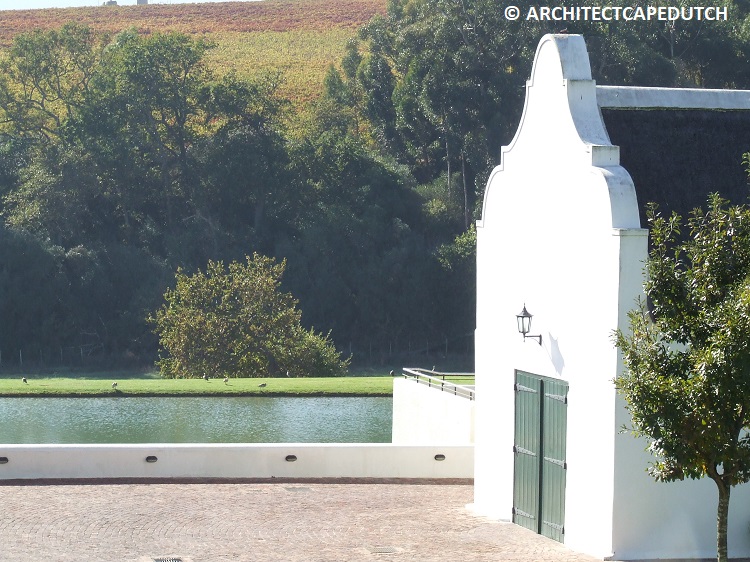
The side gables at Weberberg are of the typical "holbol" style with concave and convex shapes - as shown here at the cellar. The rectangular pool is a modern addition and compliments the stunning setting.
Sponsored:
View residential architecture designs by top architects in Cape Town at: ARCHITECTCAPETOWN
GATES AT WEBERSBERG
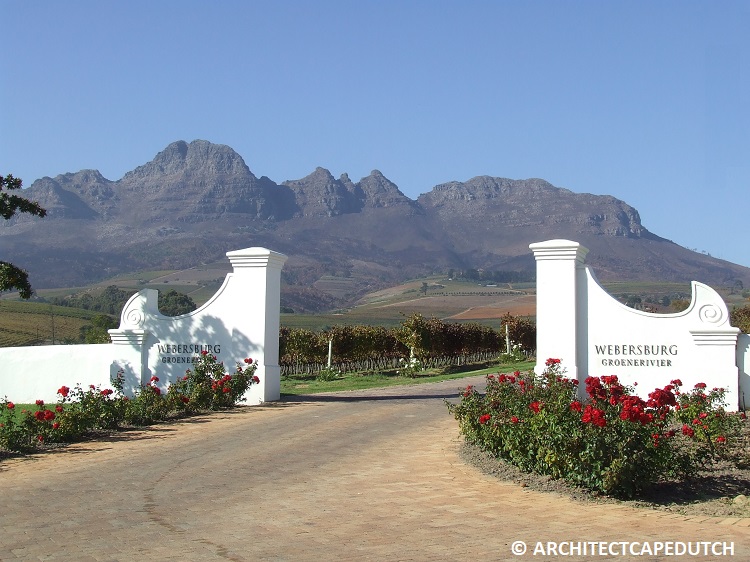
The gates to the entrance of the Cape Dutch farm are almost elaborate curved walls flanking the main gate. As with the gable, each one is unique and part of the identity of the farm.
Visit GLITZYMAGAZINE to view more images of Cape Dutch houses.
LANZERAC - neoclassical style
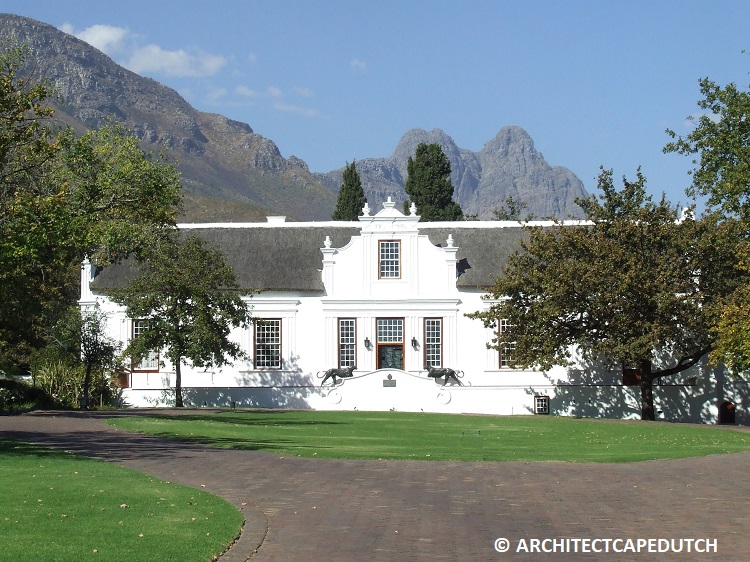
The neoclassical style became prominent during the 1800's and featured a pair of pilasters flanking the central gable window. Swirling plasterbands were simplified, however the garlands and urns remanined popular. Th gable shown here is at Lanzerac farm which is now a luxury hotel.
See TOP-ARCHITECTS for more detail about Cape Dutch architecture characteristics
CLOSE-UP OF THE GABLE

This close-up photograph of the gable at Lanzerac shows the pilasters and the four urns. The top of the galble consistsof a lightly rounded pediment. The sliding sash window is clearly visible and is of varnished timber instead of painted green.
See GLITZYMAGAZINE for more examples of modern house design in the area.
CELLAR AT NEETHLINGSHOF - Neoclassicl Style
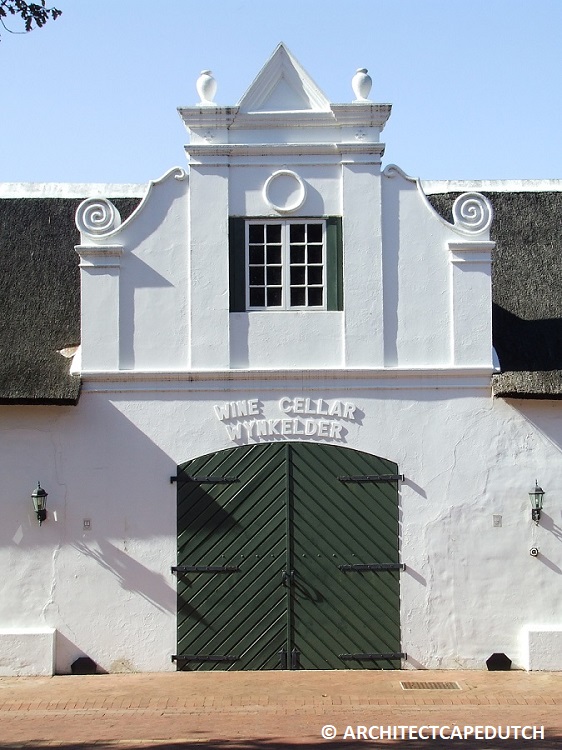
Located near to Stellenbosch, the cellar at Neethlingshof is another good example of the Neoclassical style, with the four pilasters on the gable. Scrolls replace urns capping the side-pilasters. The large timber cellar door painted green is also typical of the style especially on the outbuildings.
ELEMENTS OF CAPE DUTCH ARCHITECTRE:
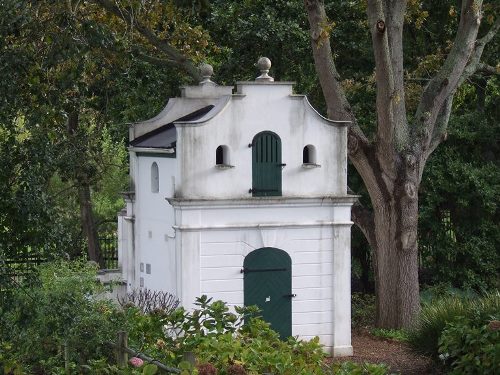
THE DOVECOT
Some consider it the only vallid style in the 2020s, there has been a huge up-tick in interest in this style in Cape Town over the past two decades.
Visit TOP-ARCHITECTS for a larger selection of Cape Town architects working in this style.

TIMBER SHUTTERS
Many of the Cape Dutch houses have timber shutters that match the flat arches of the apertures. They have a climatic and aesthetic function.
Visit ARCHITECTCAPETOWN for another innovative architect in Cape Town. in this style.
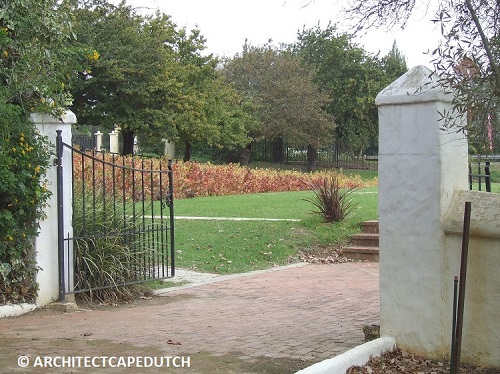
ENTRANCE GATES
The entrance gates were flanked by tall columns with low curved walls on either side in a symmetrical fashion. This is the gateway at Morgenhof farm just north of the Stellenbosch. See GLITZYMAGAZINE for characteristic elements of Cape Dutch architecture.
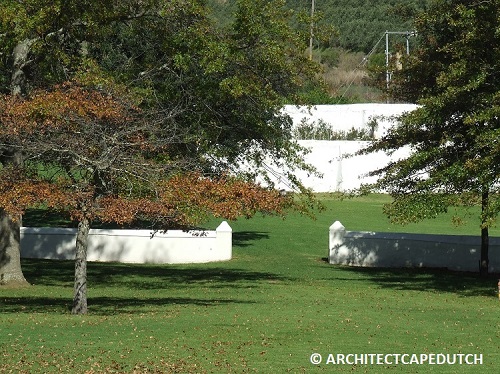
LOW WERF WALL
These short walls aproximately a metre high were used to indicate different areas of the gardens surrouding the manor house. Security was of little concern.
ArchitectCapeTown.
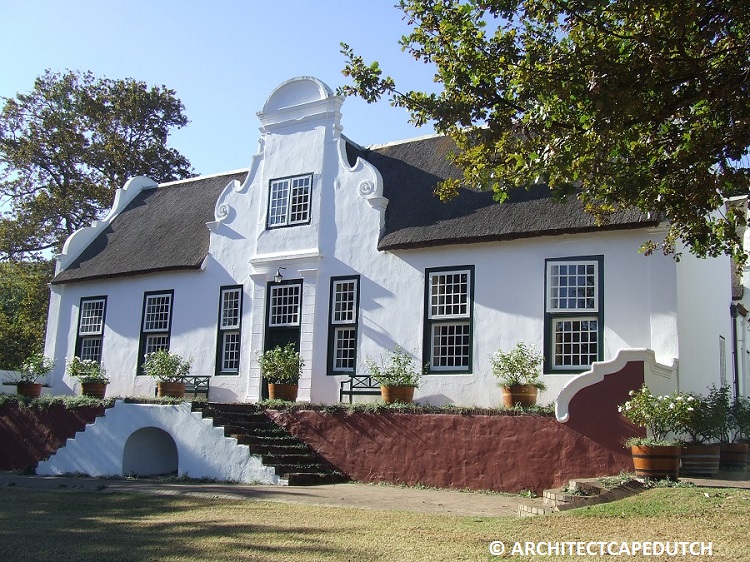
RUSTENBERG - peninsula style
The peninsula style was prominent during the 1600's and 1700's alongside the baroque style. The gable at Rustenberg is a typical example and demonstrates the protruding midsection. Visit ARCHITECTCAPETOWN for more luxurious designs by this Cape Town designer.
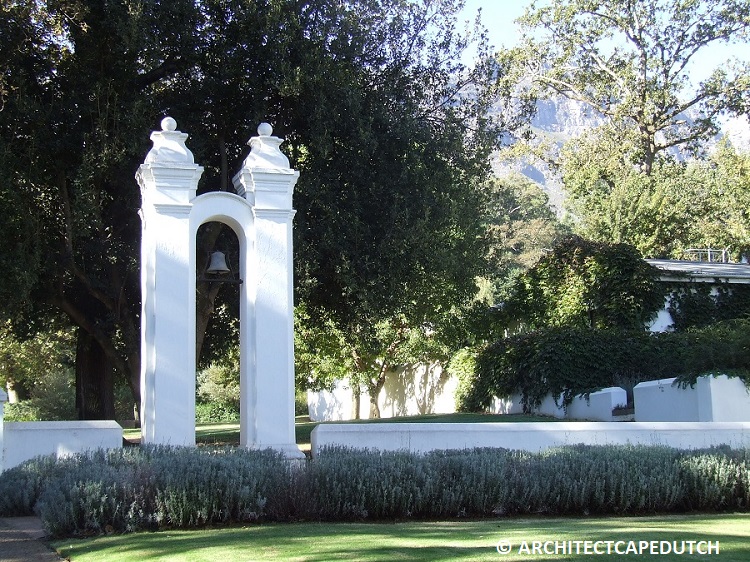
BELL TOWER - at Rustenberg Farm
Most Cape Dutch farms have a bell tower that is built in a style complimenting the main gable of the manor house. This photograph also shows the low werf wall which demarcated different sections of the property. See also GLITZYMAGAZINE for more examples of modern house design in the area.
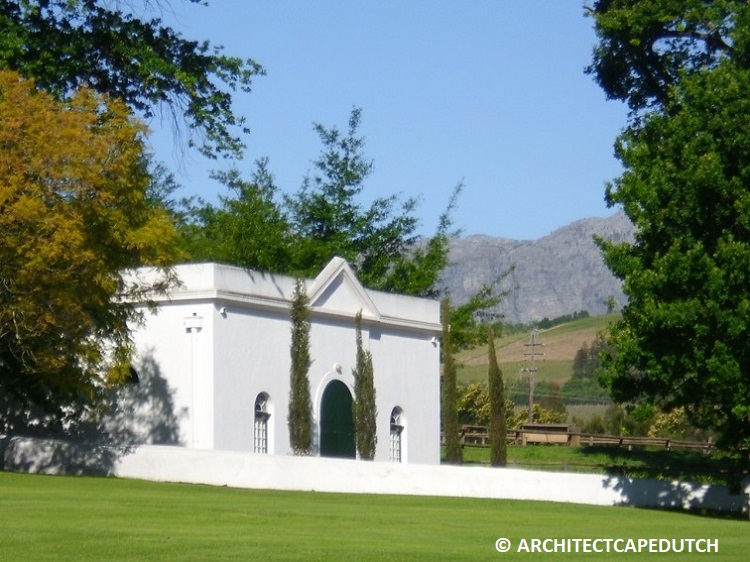
CELLAR BUILDING - at Rustenberg Farm
The cellar building at Rustenberg is in a flat roof Neoclassical style that echos the early Cape Dutch architecture of town buildings in the centre of Cape Town - such at the Koopman's de West house. Or visit CAPETOWNSPLENDOUR for architects designing contemporary houses in the area.






